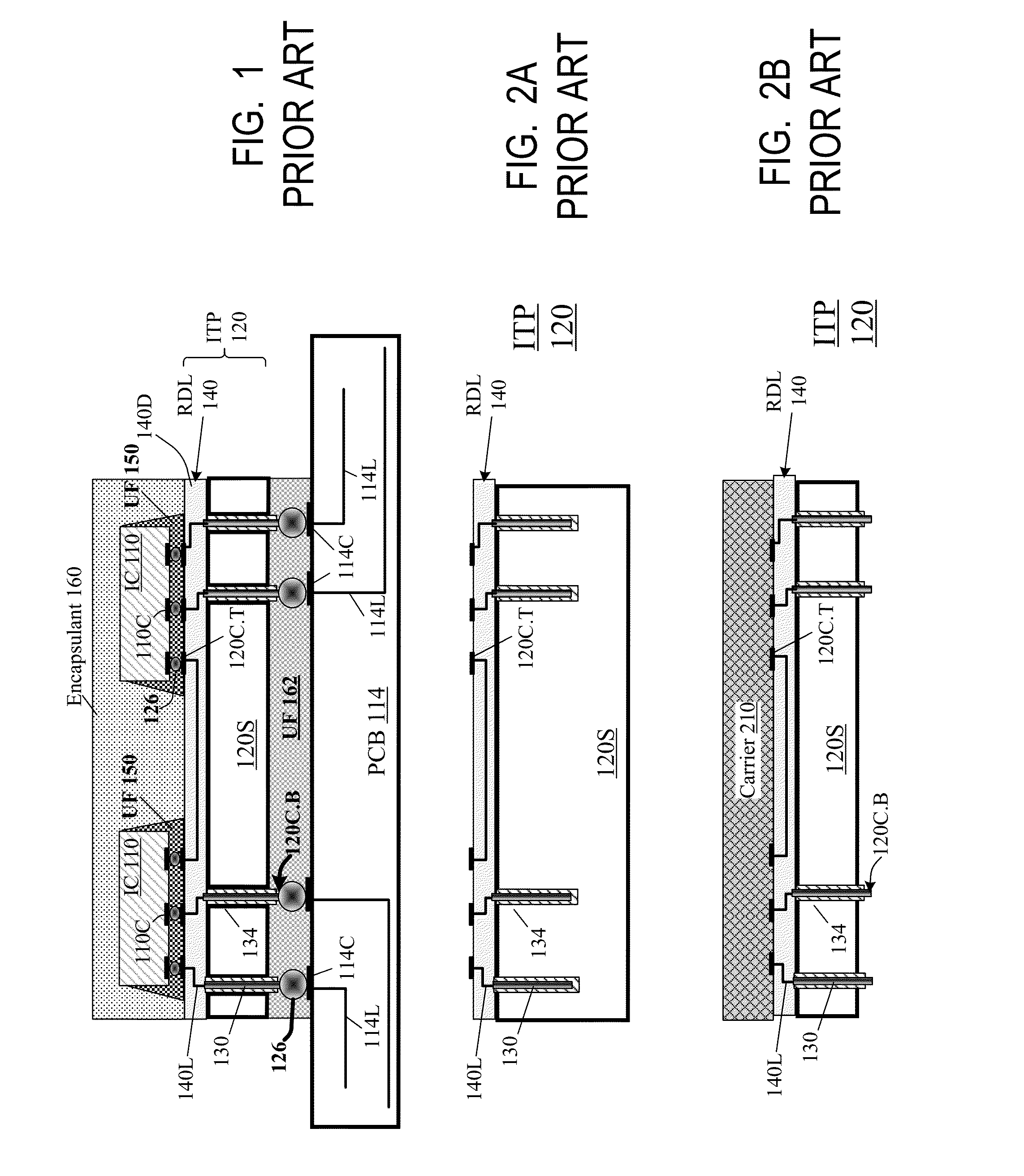Integrated circuit assemblies with rigid layers used for protection against mechanical thinning and for other purposes, and methods of fabricating such assemblies
a technology of integrated circuits and rigid layers, which is applied in the direction of semiconductor devices, semiconductor/solid-state device details, electrical devices, etc., can solve the problems of inconvenient assembly of rigid layers, inability to meet the requirements of mechanical thinning, so as to facilitate the handling of thin interposers and reduce interposer breakage and warpage
- Summary
- Abstract
- Description
- Claims
- Application Information
AI Technical Summary
Benefits of technology
Problems solved by technology
Method used
Image
Examples
Embodiment Construction
[0026]The embodiments described in this section illustrate but do not limit the invention. In particular, the invention is not limited to specific processes, dimensions, and other features except as defined by the appended claims.
[0027]FIG. 5 is a flowchart of an exemplary fabrication process for some embodiments of the present invention including some embodiments illustrated in FIG. 4B. Interposer fabrication starts with a substrate 120S which can be sufficiently thick to meet the strength, heat dissipation, and possibly other fabrication requirements. In some examples, substrate 120S is a wafer in which multiple interposers are fabricated at the same time. The interposer wafer can be singulated into individual interposers before or after attachment of die 110 to the interposers. For example, multiple assemblies can be fabricated as a single structure based on a single interposer wafer, and each assembly can be as in FIG. 4B or some other type. The multiple-assembly structure can b...
PUM
 Login to View More
Login to View More Abstract
Description
Claims
Application Information
 Login to View More
Login to View More - R&D
- Intellectual Property
- Life Sciences
- Materials
- Tech Scout
- Unparalleled Data Quality
- Higher Quality Content
- 60% Fewer Hallucinations
Browse by: Latest US Patents, China's latest patents, Technical Efficacy Thesaurus, Application Domain, Technology Topic, Popular Technical Reports.
© 2025 PatSnap. All rights reserved.Legal|Privacy policy|Modern Slavery Act Transparency Statement|Sitemap|About US| Contact US: help@patsnap.com



